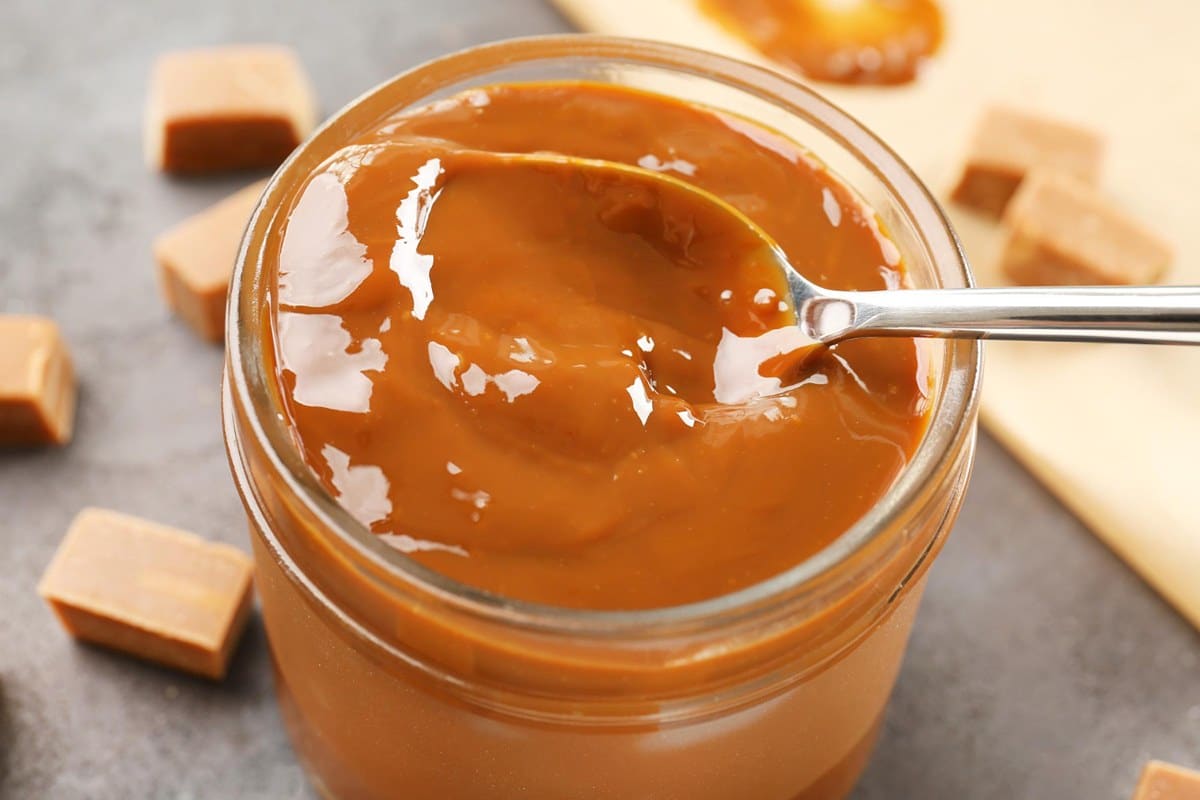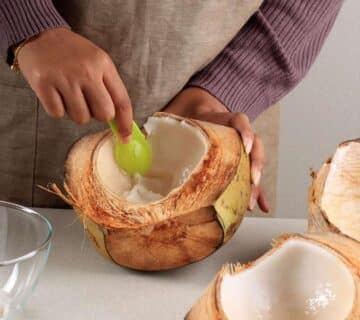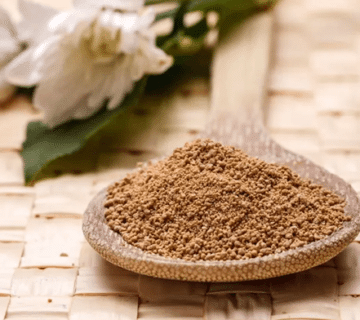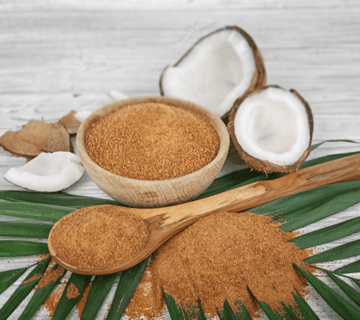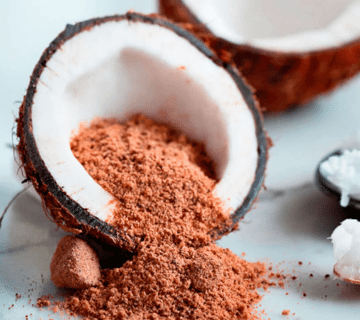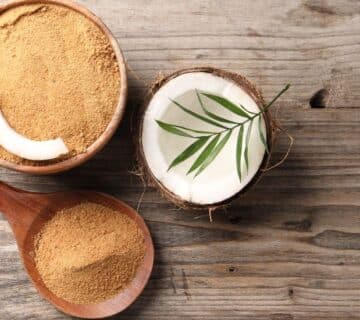Caramel is a beloved confectionery delight that adds a rich, sweet, and slightly nutty flavor to a variety of dishes. Traditional caramel is often made with white sugar, but for those looking for a healthier, more natural alternative, coconut sugar offers a fantastic substitute.
Coconut sugar caramel not only provides a delicious flavor but also comes with the added benefits of lower glycemic index and additional nutrients. This guide will walk you through the process of making coconut sugar caramel, including the ingredients, equipment, step-by-step instructions, applications, and how to properly store it.
Step-by-Step Guide to Homemade Coconut Sugar Caramel
Sugar-free caramel sauce typically relies on artificial sweeteners such as erythritol, along with heavy cream and butter. However, this refined sugar-free caramel sauce takes a different approach, omitting these conventional ingredients.
Instead, it uses wholesome, natural ingredients like coconut sugar, coconut milk, a splash of vanilla, and a pinch of salt to achieve a rich and gooey caramel sauce. As an added bonus, it’s entirely vegan. Here’s the full guide on how to make coconut sugar caramel:
A. Ingredients
- 1 cup of coconut sugar
- 1/4 cup water
- 1/2 cup heavy cream (room temperature)
- 2 tablespoons unsalted butter (room temperature)
- 1/2 teaspoon salt (optional)
- 1 teaspoon vanilla extract (optional)
B. Equipments
- Heavy-bottomed saucepan
- Wooden spoon or silicone spatula
- Candy thermometer
- Measuring cups and spoons
- Heat-resistant spatula
- Whisk
- Glass jar or airtight container
C. Step-by-Step Instructions
1. Preparing the Ingredients
Before starting, measure out all your ingredients. Having everything ready will help you work quickly and efficiently, as caramel can go from perfect to burnt in seconds.
2. Dissolving the Sugar
In a heavy-bottomed saucepan, combine the coconut sugar and water.
Stir the mixture over medium heat until the sugar is completely dissolved. This usually takes about 5 minutes. Ensure the mixture doesn’t boil at this stage to avoid crystallization.
3. Cooking the Caramel
Once the sugar is dissolved, increase the heat to medium-high and bring the mixture to a gentle boil. Do not stir during this process; instead, gently swirl the pan occasionally.
Using a candy thermometer, cook the caramel until it reaches a temperature of 320°F (160°C). This is the stage where the sugar turns into caramel. Watch closely as the color changes to a deep amber.
4. Adding the Cream and Butter
Remove the pan from heat. Carefully and slowly whisk in the room-temperature heavy cream. Be cautious, as the mixture will bubble up vigorously.
Once the bubbling subsides, add the butter and salt (if using). Stir until the butter is fully melted and incorporated. If you are using vanilla extract, add it now and stir to combine.
5. Cooling and Storing
Allow the caramel to cool in the saucepan for about 10 minutes. Then transfer the caramel to a glass jar or an airtight container. Let it cool completely before sealing the container.
Next, store the caramel in the refrigerator for up to two weeks.
Ways to Use Coconut Sugar Caramel
Coconut sugar caramel is incredibly versatile and can be used in a variety of delicious ways:
- Drizzling
Pour over ice cream, pancakes, waffles, or yogurt for a sweet treat.
- Baking
Use it as a filling for tarts, cakes, and cookies, or swirl it into brownie or cheesecake batter.
- Dipping
Serve as a dip for apple slices, pretzels, or marshmallows.
- Beverages
Stir into coffee, hot chocolate, or cocktails for a caramel twist.
- Sauces
Mix into savory dishes like glazes for meats or dressings for salads.
Proper Storage of Coconut Sugar Caramel
To maintain the delicious flavor and ideal consistency of your homemade coconut sugar caramel, proper storage is essential. Here are detailed guidelines on how to store your caramel to keep it fresh and ready to use:
1. Refrigeration
Once your caramel has cooled completely, transfer it into an airtight container. Glass jars with tight-fitting lids work exceptionally well for this purpose.
When stored in the refrigerator, coconut sugar caramel can last for up to two weeks. The cool temperature slows down the degradation process, keeping your caramel fresh and safe to eat.
Note that refrigerated caramel will thicken as it cools. Before using it, you may need to warm it up slightly to achieve a pourable consistency. You can do this by microwaving it in short bursts (10-15 seconds), stirring in between, or by gently heating it in a saucepan over low heat.
2. Freezing
For longer-term storage, you can freeze coconut sugar caramel. Place the cooled caramel in a freezer-safe container, ensuring you leave some space at the top of the container for expansion as the caramel freezes.
Frozen caramel can last for up to three months without significant loss of quality.
When you are ready to use the frozen caramel, thaw it in the refrigerator overnight. Once thawed, you may need to warm it slightly to return it to a smooth, pourable state. Avoid reheating it too quickly or at too high a temperature, as this can alter the texture and flavor.
3. Room Temperature Storage
While it is generally best to store coconut sugar caramel in the refrigerator or freezer, you can keep it at room temperature for short periods if necessary.
If you plan to use the caramel within a day or two, you can keep it in an airtight container at room temperature. Ensure the container is sealed properly to prevent contamination and exposure to air, which can cause the caramel to dry out or develop an off-flavor.
Be mindful of the ambient temperature. If your kitchen is particularly warm, it is better to store the caramel in the refrigerator to avoid spoilage.
Tips for Maintaining Quality
- Always use clean spoons or spatulas when scooping out caramel to prevent introducing bacteria that can cause spoilage.
- Ensure that no moisture enters the container when scooping out caramel. Water can cause the caramel to crystallize or spoil.
- Before using stored caramel, check for any signs of spoilage such as mold, off smell, or discoloration. Discard any caramel that shows these signs to avoid health risks.
Ready to Make Your Own Coconut Sugar Caramel?
Making your own coconut sugar caramel at home is a delightful way to enjoy a healthier, more natural version of this beloved treat. Whether you’re drizzling it over desserts, using it as coconut sugar syrup, or simply enjoying it by the spoonful, coconut sugar caramel offers a rich and complex flavor that’s sure to impress.
If you’re looking to purchase coconut sugar, especially in bulk, consider Sari Coconut. Sari Coconut is the leading certified supplier of coconut derivative products from Indonesia, offering a wide range of high-quality items including coconut oil, coconut charcoal briquettes, coconut sugar, coconut fiber, and much more.
For those in the food and beverage industry, partnering with Sari Coconut can ensure a reliable supply of top-notch coconut products. Contact Sari Coconut today for the best coconut sugar supplier and how they can support your business with premium coconut derivatives!
FAQ
Why use coconut sugar instead of regular sugar?
Coconut sugar is considered a healthier alternative to regular white sugar. It has a lower glycemic index, which means it has a lesser impact on blood sugar levels. Additionally, coconut sugar contains trace amounts of vitamins and minerals such as iron, zinc, calcium, and potassium.
Can I use plant-based cream instead of heavy cream?
Yes, you can substitute heavy cream with plant-based alternatives such as coconut cream or almond milk cream. Keep in mind that the texture and flavor might vary slightly.
My caramel turned out too thick. What should I do?
If your caramel is too thick, you can gently reheat it and add a small amount of cream or water to reach your desired consistency. Add the liquid slowly and stir continuously to avoid making it too runny.
Can I make caramel without a candy thermometer?
While it is possible to make caramel without a candy thermometer, it is more challenging to get the right consistency and avoid burning. If you don’t have a thermometer, look for visual cues such as the color changing to a deep amber and the mixture bubbling vigorously.
Why did my caramel crystallize?
Caramel can crystallize if the sugar isn’t fully dissolved before boiling or if there are impurities in the sugar. To avoid this, ensure the sugar is completely dissolved in the water before increasing the heat, and avoid stirring once the mixture starts boiling.

